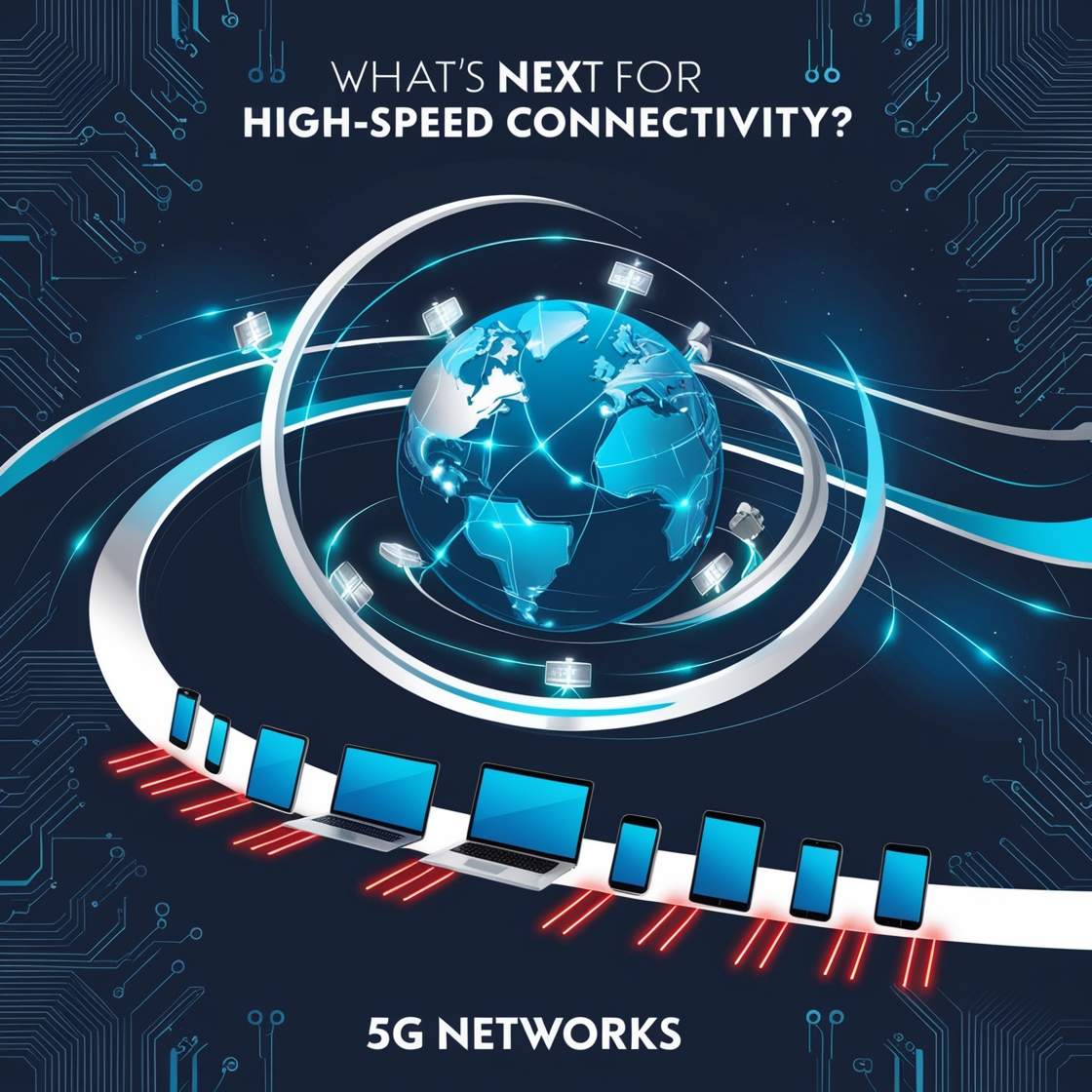Introduction
Have you ever marveled at how quickly you can download a movie or stream a game on your mobile device? Well, that’s just the tip of the iceberg with 5G technology! As we plunge deeper into the world of high-speed connectivity, understanding what’s next for 5G networks is crucial. Let’s dive into the current state, future potential, and what it all means for us.
What is 5G?
So, what exactly is 5G? At its core, 5G is the fifth generation of mobile networks, designed to deliver faster speeds, lower latency, and more reliable connections. Unlike its predecessor, 4G, which focused primarily on enhancing mobile internet speeds, 5G opens up a whole new world of possibilities, catering not just to phones, but to various devices and technologies.
The Benefits of 5G
What’s the big deal about 5G, you ask? Well, for starters, it offers incredible speed—think of downloading a full-length HD movie in just seconds! Additionally, its low latency means that your online actions happen almost instantly, which is a game-changer for activities like gaming or video conferencing. Plus, with the growing Internet of Things (IoT) landscape, 5G can support thousands of devices simultaneously without breaking a sweat.
Current 5G Implementation
As for where we stand now, 5G networks are being rolled out worldwide, with countries like the U.S., South Korea, and China leading the charge. Major telecommunications companies are investing billions in infrastructure, but challenges like high costs, regulatory hurdles, and technical issues still loom large.
Future Innovations Enabled by 5G
What does the future hold? For starters, 5G could revolutionize our cities, paving the way for smart urban planning where everything from traffic management to waste disposal is optimized using real-time data. Telemedicine is another exciting frontier—imagine a doctor performing a surgery remotely with a robot, thanks to 5G’s low latency. And as remote work and online learning continue to expand, a robust 5G network could enhance the experience, making video calls feel as natural as face-to-face conversations.
5G and Industry 4.0
Speaking of industry, 5G is set to play a pivotal role in Industry 4.0, where automation and data exchange are at the forefront. Real-time data processing will become standard, and combining 5G with AI and machine learning will unlock efficiencies and innovations we can’t yet imagine.
5G Security Concerns
But hold on—every rose has its thorns. With great connectivity comes great responsibility. The increased number of connected devices also opens up vulnerabilities in the network, raising valid security concerns. It’s essential for companies and governments to implement robust security protocols to safeguard against potential threats.
The Role of Edge Computing
Enter edge computing, a technology that processes data closer to the source rather than relying on centralized data centers. By combining edge computing with 5G, we can reduce latency further and enable real-time data processing. This synergy is crucial for applications like autonomous vehicles and smart factories.
5G in Entertainment and Media
Let’s not forget about entertainment! 5G will revolutionize how we consume media. Imagine seamless 4K streaming and cloud gaming with no buffering delays. Virtual reality experiences will become richer and more immersive, opening new doors for gaming and interactive content.
Regulatory Challenges and Considerations
Of course, as we race towards a 5G future, regulatory challenges abound. Governments will need to navigate complex policies and spectrum allocation issues to ensure a smooth rollout and equitable access.
Environmental Impact of 5G
Another consideration is the environmental impact of 5G technology. While it promises efficiency, the energy consumption associated with 5G infrastructure is significant. Balancing the benefits of connectivity with sustainability efforts will be key in the coming years.
The Global Divide in 5G Access
Not everyone will enjoy equal access to 5G, though. The divide between urban and rural areas in terms of connectivity remains a pressing issue. Bridging this gap will require targeted investments and innovative solutions.
Consumer Expectations and Adoption
As 5G continues to evolve, what do consumers expect? Fast internet speeds are a given, but users also desire better coverage and reliability. Understanding these expectations will be vital for telecom companies aiming for widespread adoption.
Predictions for the Future of 5G
Experts predict that 5G will continue to evolve, enabling advancements like holographic communication and enhanced augmented reality experiences. As technology marches forward, the possibilities seem endless.
Conclusion
In summary, 5G networks are not just a step up from previous generations; they’re a leap into the future. With endless potential across various industries, smart cities, and personal connectivity, the future looks bright. However, it’s crucial to address the challenges that come with it to fully realize its benefits.
FAQs
- What is the primary benefit of 5G over 4G?
- The main benefits are significantly faster speeds, lower latency, and the ability to connect a much larger number of devices.
- How will 5G impact smart cities?
- 5G can facilitate real-time data exchange, improving traffic management, energy efficiency, and overall urban planning.
- What security measures are being taken for 5G networks?
- Telecommunications companies are implementing advanced encryption, network slicing, and regular security audits to safeguard against vulnerabilities.
- Will 5G improve remote work?
- Absolutely! With faster and more reliable connections, remote work will become smoother and more efficient, enhancing collaboration.
- What are the environmental concerns surrounding 5G?
- The energy consumption of 5G infrastructure raises concerns about sustainability, necessitating efforts to mitigate its environmental impact.
